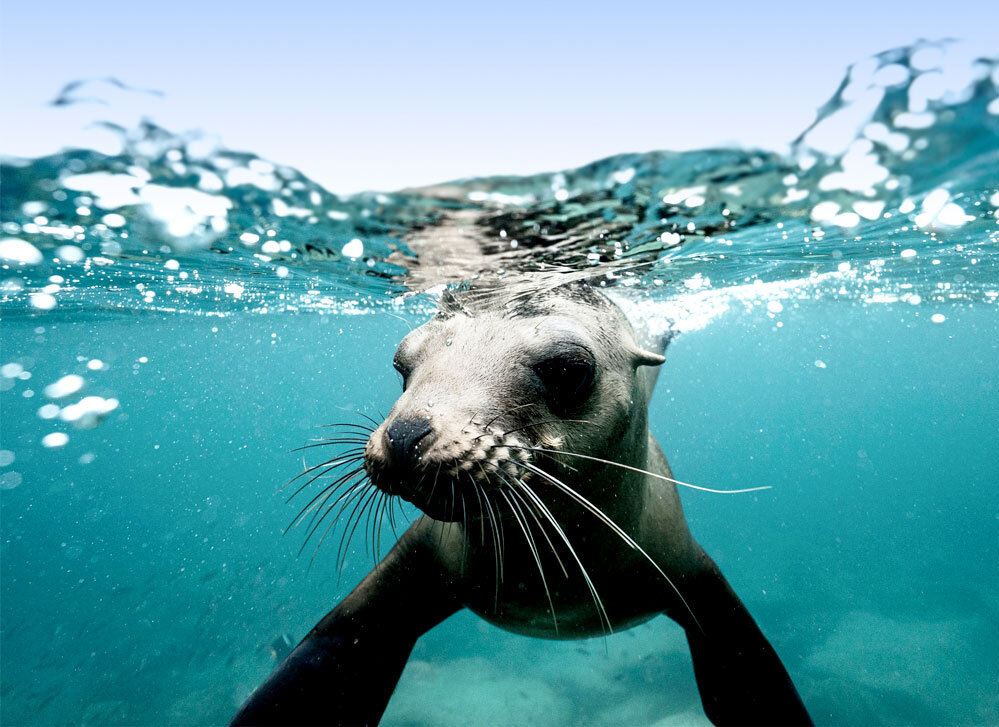Marine Animals Are At Risk Of Contracting Covid-19
By Ashley Joseph
Amid the coronavirus pandemic, scientists worry SARS-CoV-2, the coronavirus that causes Covid-19, could infect marine animals. With the prevalence of gene mutations among marine mammals increasing their susceptibility to contracting SARS-CoV-2, the risk of infection highlights the vulnerabilities of the delicate community.
Photo by Elianne Dipp
Currently the threat is purely hypothetical, however the research insinuates a probable future through the investigation of the genetic risk factors of various marine mammals.
For the study, scientists at Dalhousie University combed through genetic data for the key amino acids that constitute viral proteins used to initiate an infection. Based on the amino acid patterns, researchers uncovered that at least 15 marine mammal species are prone to infection by SARS-CoV-2. Over half of the threatened species are already at-risk globally (Allen, 2020).
Marine mammals are more susceptible to the transfer of COVID-19 due to the shared human DNA sequences. In other words, humans are much more closely related to marine mammals than other ocean dwellers. The genetic and physiological similarities between marine mammals and humans increase the likelihood for an infectious agent to contrive a shared weakness.
Some marine mammals have ACE2 receptors that bind easily with SARS-CoV-2’s spike protein, creating a risky situation. Graham Dellaire, a pathologist at Dalhousie University, remarked: “If binding efficiency is high, you don’t need a high viral load to become infected (Averett, 2020).” In other words, this single genetic variation places marine animals in a state of inclined vulnerability.
Currently, cats, dogs, and other mammals can be infected with SARS-CoV-2. A small number of pet cats and dogs have been reported to be infected with SARS-CoV-2 in several countries, including the United States. Many of the infected cats and dogs became sick after contact with a human. Large cats in captivity have also tested positive. According to the CDC, “several lions and tigers in a New York zoo, a puma in South Africa, and tigers in a Tennessee zoo tested positive for SARS-CoV-2 after showing signs of respiratory illness. It is suspected that these large cats became sick after being exposed to zoo employees with COVID-19" (“COVID-19 and Animals,” 2020).
Unlike zoo animals and pets found in proximity and maintaining contact with humans, marine animals tend to live a relatively sheltered life without considerable exposure. However, their high susceptibility to the SARS-CoV-2 virus indicates that marine mammals may be at risk from even small amounts of the virus through agents of transfer.
Furthermore, there are concerns that untreated wastewater could function as a vessel for coronavirus. The presence of SARS-CoV-2 virus has been detected in wastewater. Oftentimes, wastewater is sent to treatment plants to clean sewage and water so that they can be returned to the environment. These plants remove suspended solids, kill microbes, break down organic matter and restore the oxygen content of treated water (Allen, 2020). However, when the treatment plants reach maximum capacity, the untreated wastewater is discharged into waterways. When untreated effluent is released into the environment, the virus that causes COVID-19 enters marine habitats.
Photo by Yogendra Singh
With the looming risk of SARS-CoV-2 “jumping” from humans to marine animals, populations of marine life are in fear of decreasing rapidly. Graham Dellaire stated, “Many of these species are threatened or critically endangered. In the past, these animals have been infected by related coronaviruses that have caused both mild disease as well as life-threatening liver and lung damage.” Threatened populations are predicted to be on the verge of dwindling or acquiring complications with the “jump.” Thus, the study seeks to prevent this by motivating coastal cities with susceptible marine mammals to shore up their wastewater treatment plants to keep the virus out of rivers and oceans.
A July review study downplays the risk of marine mammals acquiring the virus. Ian Hewson, a biological oceanographer at Cornell University, confirmed the prevalence of SARS-CoV-2 virus particles in wastewater, but denied any paramount effect of this occurrence. With the substantial decay, loss of infectivity, and exposure to sunlight in the ocean, transmission through wastewater is perceived unlikely.
Although SARS-CoV-2 has defied expectations with its stability and susceptibility, Ian Hewson questions the likelihood of transmission to marine life. “The big question is whether wastewater runoff is a viable route for transmission, and my best guess is that it’s not,” Hewson says (Averett, 2020). With the difference in opinions, further research is essential to determine the effectiveness of transfer.
Photo by Daniel Torobe
By highlighting the vulnerabilities and observations, the study calls for acting with foresight to safeguard at-risk marine animals. Planning to mitigate the environmental impact of the COVID-19 pandemic is necessary to alleviate the devastating risks. With the hope of shaping policy decisions regarding wastewater management around the world, researchers remain hopeful for the future outcome.
Works Cited
Allen, L. (November 15, 2020). Study Shows Endangered Marine Mammals Are At Risk Of Contracting COVID-19. Retrieved November 21, 2020, from https://www.forbes.com/sites/allenelizabeth/2020/11/10/study-shows-endangered-marine-mammals-are-at-risk-of-contracting-covid-19/?sh=5af7e224279a
Averett, N. (September 17, 2020). Could Marine Mammals Contract COVID-19? Retrieved November 21, 2020, from http://www.hakaimagazine.com/news/could-marine-mammals-contract-covid-19
COVID-19 and Animals. (November 18, 2020). Retrieved November 21, 2020, from https://www.cdc.gov/coronavirus/2019-ncov/daily-life-coping/animals.html



